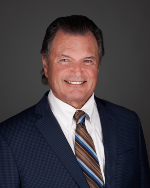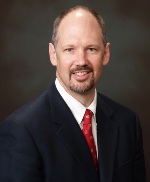When coaching is really good, it is difficult to discern who is coaching whom, since the communication goes two ways. I have been on the giving and receiving end of coaching since I was a kid. I learned to ask questions as part of listening, and my teachers built their guidance around my questions. The more they knew, it seemed, the less pompously they responded and the more they invited questions. Welcoming the give and take of a zealous student, they taught me to work collaboratively, which I have done increasingly over four decades.
I began my teaching and leadership career at Wesleyan University, where I team-taught with experienced professors of philosophy, political science and literature and learned to create comfortable space for exploration and discovery among colleagues and students. While there I was insistent that Wesleyan hire its first female senior administrator. The provost welcomed my enthusiasm and invited me to design the new position and organize the hiring process. Wesleyan’s collaborative approach to learning and innovating would become my own.
Lafayette College was also a welcoming environment for an entrepreneurial educator. There, I was able to design interdisciplinary courses, history courses and even new programs. As associate dean of the faculty (the first female academic leader) and chair of the history department, I worked collaboratively and never (well, hardly ever) had to force change where it was not welcomed. I saw myself as a facilitator and combiner of the immense talent that surrounded me, able to surface the best attributes of my colleagues. I visited classes and administrative meetings and welcomed visitors into mine. My colleagues and I developed a welcoming and inclusive learning climate across departments and the whole college, including two provosts and two presidents.
I took the lessons learned as teacher and administrator to my work as full-time dean, provost and president over more than twenty years in institutions with a range of faith traditions, diversity commitments, intellectual capacities and academic interests. Since I had begun my administrative career with coaching from university leadership, I looked for more of the same as I assumed increasingly responsible positions where I was myself becoming a constant coach. I knew no other way to lead and learn at the same time.
I became chief academic officer at Illinois Wesleyan within a year of my arrival there. The vice president for academic affairs coached me daily when I first arrived, but he was unable to be so attentive once the president resigned and he filled the position while a national search was conducted. I found myself learning alongside of the faculty and becoming deeply involved in the search for my future boss upon whose appointment I was named provost. I did my best to introduce him to the ways of the University as I was learning them and with the advice of a colleague from the sciences, who joined me in the academic administration and became resident coach for the two senior administrators. We designed, funded and oversaw the construction of a new science center and introduced new programs into the university. We coached one another, laughed with one another over the challenges that came our way and worked together on projects interchangeably. Faculty colleagues were very helpful as were trustees, alumni and local clergy. As I coached the institution, it coached and sustained me.
Four years later I began twenty years of service in the office of the president of three different institutions, each with familiar and unfamiliar challenges. Whereas I had come from schools with strong endowments and stable personnel, I presided at less financially secure schools with the anxieties of institutions on the edge. I needed to be calm in the storms to chart the necessary courses. Once again, I relied upon good coaching to become a better coach myself.
Albright College was in very dangerous financial shape, leaving me with little choice but to eliminate programs and reposition the college for the long term. With little hesitation I found some coaches who steadied my nerves and assisted me in planning. I had to identify a financial officer who could decipher years of obfuscated financial records and a vice president of academic affairs who could oversee program reductions. I had to work with a faculty that was wounded by financial exigency including the loss of twenty tenured colleagues. For me this was sheer hell; I needed coaching all the time. Trustees and professional coaches carried me though and helped me at least to some degree separate myself from the institution I was serving. I persisted there for seven years, because I wanted to get the school on a decent course. If I was moderately successful, and I believe I was, it was because my planning coach and the faculty member appointed to the planning office steered the institution alongside me.
I left Albright confident that the school’s financial condition had turned around and went to rescue New England College. This, too, was a turn-around situation with obfuscated financial data. Whereas Albright had an excellent academic reputation, New England College did not. It needed mission clarification, program improvement in both traditional and non-traditional areas and a transformation of its enrollment processes. Once again I sought coaching assistance from trustees and professional coaches and gradually assembled a talented staff. Gradually we turned the place around, but not without a restive and increasingly hostile faculty which questioned the need for substantial change. After persisting for five years I advised the board of my intention to step out and give someone else the chance to press the agenda. Fortunately the board chair was able to assume the presidency during the search for new leadership, and I was able to explore new opportunities in another part of the world, confident that I was leaving the College in very wise hands.
I learned that American University of Central Asia needed an experienced, Russian speaking president to resolve an intercultural leadership crisis and continue the development of a young and promising university that enjoyed the support of the Kyrgyz government, the US government and the Open Society Foundation of George Soros. This opportunity suited me (and very few others) to a “T”, and I went to Bishkek to preside for a five year period sandwiched between violent political revolutions. I consulted with locals and visitors — ambassadors, entrepreneurs, educators, trustees and alumni. I worked with colleagues in New York, Washington and Moscow. To deepen the mission, I found a brilliant vice president for academic affairs who enabled me to focus on the international side of my work: accreditation, partnerships, foundations, new buildings and the board. I also hired an experienced international banker as vice president for finance. With a team in place with local and international credibility, I could develop grants, partnerships and a new campus.
In my second year, although confident in the strategic direction, daily decisions were blurring my vision. I was becoming entrenched and needed a coach to help me prioritize and transcend the irritating intrigue of the indigenous culture. My coach sharpened my case for funding, helped with personnel issues and made excellent suggestion for the interface with local trustees. Most important, he helped me to realize how costly it would be to obtain US accreditation. His coaching opened my mind to a transformational opportunity that my board chair brought our way: U.S. accreditation through Bard College! The coaching also helped with funding programs and campus. The momentum was established and a few years later I was able to return home confident in AUCA’s future.
Now that I am back from Bishkek, I have begun to share my wisdom and experience with colleagues in academic administration, most especially presidents but also deans and vice presidents. Knowing when to bring in a coach can be tricky. New presidents and deans hesitate to spend their resources on a leadership coach. But it is far better to find a coach when you begin your work than later on.
You will accomplish so much more with an objective, apolitical reading about strategy, personnel and style from the outset. If your goal is to make a difference, ensure a good alignment between mission and strategy, president and team, president and board, then work with someone who can be on your side, whispering in your ear, helping you think through complex situations. Find a good coach who can come to your campus, work with you and your senior staff, get to know the school and help you think through a leadership action plan. A good coaching relationship can be established in a week and implemented over six months to a year, by phone or in person, to keep your thinking calibrated and your actions timely and effective. When you invest in good coaching, you become an excellent coach for your team and for your institution.
Ellen Hurwitz, PhD
Senior Consultant, Stevens Strategy


 John Stevens, Ed.D.
John Stevens, Ed.D. Brendan Leonard, M.B.A.
Brendan Leonard, M.B.A.
Leave a Reply